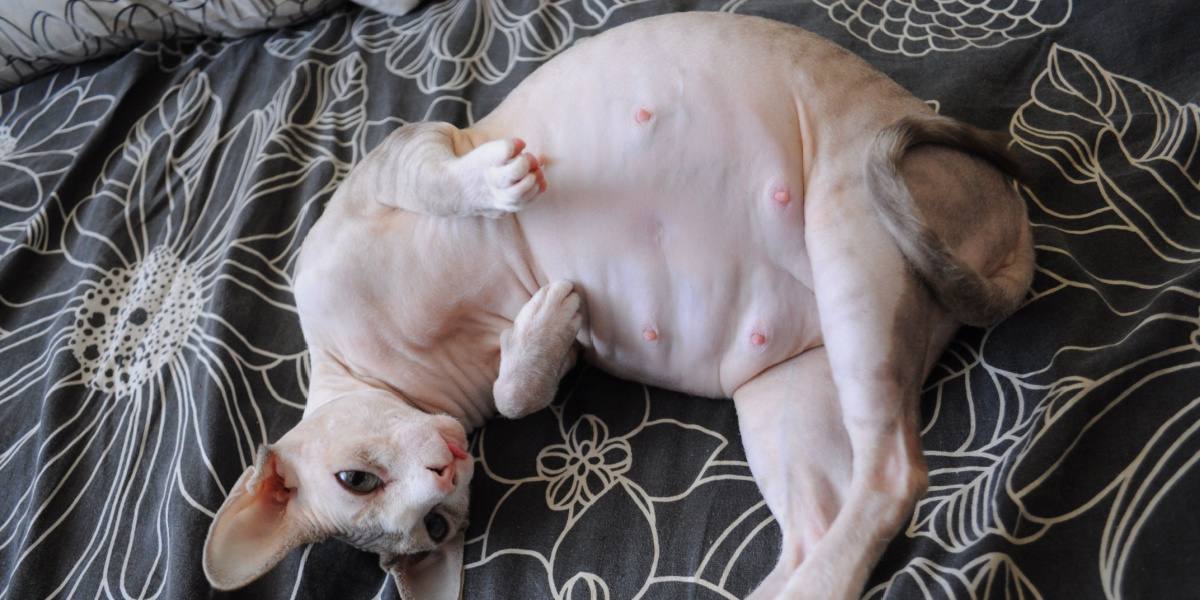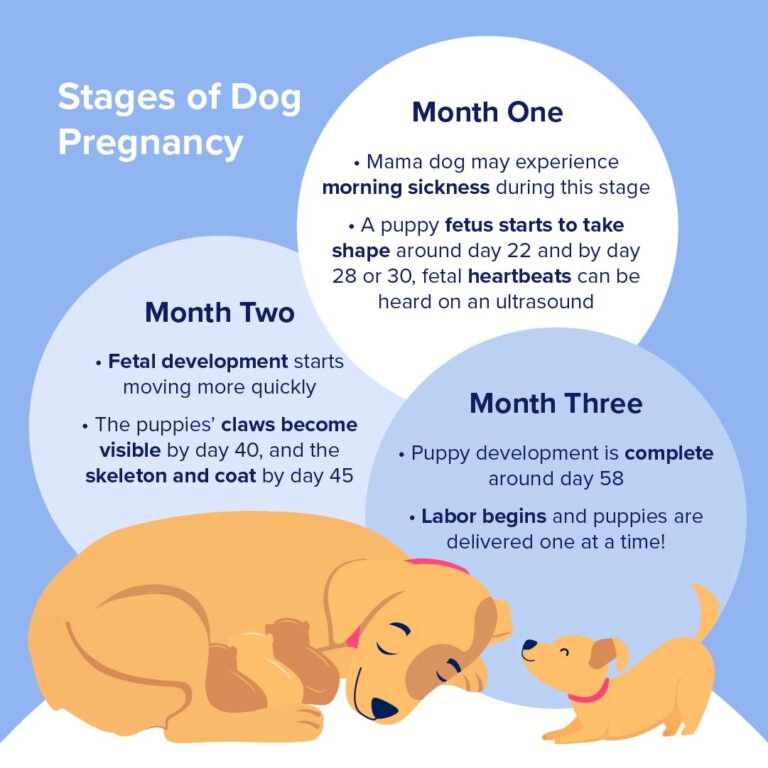One of the exciting aspects of dog ownership is the possibility of your furry friend becoming pregnant. If you are eagerly awaiting the arrival of puppies, you might be wondering, “When does a pregnant dog start to show?” Recognizing the signs of pregnancy in dogs is crucial for their care and preparation. As a responsible pet owner, understanding the timeline of a dog’s pregnancy and when physical changes become apparent is essential. In this guide, we will explore the early signs and stages of pregnancy in dogs, helping you to identify when your beloved canine companion is starting to show that she is expecting.
Understanding Dog Pregnancy
When does a pregnant dog start to show? This is a common question among dog owners awaiting puppies. The signs of dog pregnancy can vary, but typically a pregnant dog will start to show visible signs around the 3-week mark.
Recognizing Early Signs
During the early stages of pregnancy, it may be challenging to notice physical changes in the dog. Some signs to look for include increased appetite and subtle behavioral changes.
Physical Changes
As the pregnancy progresses, typically around week 4-5, the dog’s abdomen may start to enlarge. This is when the dog will truly start to show signs of being pregnant.
It’s also common to notice nipple growth and color changes as the body prepares for nursing the puppies.

Early Signs of Pregnancy in Dogs
Recognizing the early signs of pregnancy in dogs can be crucial for providing proper care and preparing for the upcoming litter. While each dog may exhibit slightly different symptoms, there are common indicators to look out for.
Changes in Behavior
Dogs may show signs of lethargy or increased affection. Some may become more protective or restless. Observing any significant behavioral changes can help in identifying early pregnancy.
Physical Changes
Physical signs include enlarged nipples, weight gain, and a slightly swollen abdomen. It is essential to monitor these changes for confirmation.
- Enlarged Nipples: The nipples will become larger and may change in color.
- Weight Gain: Gradual weight gain, particularly in the abdominal area, is typical.
Physical Changes as Pregnancy Progresses
During a dog’s pregnancy, there are noticeable physical changes that occur as the pregnancy progresses. These changes can help you determine when your dog is starting to show signs of being pregnant.
Development of the Abdomen
As the pregnancy advances, the most prominent change is the development of the dog’s abdomen. You may start to notice a slight rounding of the belly, especially around 4 to 5 weeks from conception. This is when your dog begins to show visible signs of pregnancy.
By paying attention to the size and shape of the abdomen, you can track the progression of the pregnancy and anticipate when your dog will start showing more signs.
Changes in Nipple Size and Color
Another significant change is the enlargement and darkening of the dog’s nipples. This usually occurs around the third week of pregnancy. The nipples become more prominent and may turn a darker shade, signaling the body’s preparation for nursing.
- Monitor the size and color changes in the nipples for a clear indication of pregnancy progression.
- Examine the nipples regularly to identify any changes.
Behavioral Changes to Look Out For
During the early stages of pregnancy in dogs, it can be challenging to identify physical changes. However, observing behavioral changes can provide valuable clues to determine if your dog is expecting. Here are some key behavioral changes to look out for:
Increased Restlessness
Pregnant dogs may exhibit increased restlessness as they prepare for the arrival of their puppies. This restlessness can manifest as pacing, inability to settle, or constant nesting behaviors.
It’s crucial to provide a comfortable and secure space for your pregnant dog to alleviate her restlessness during this time.
Changes in Appetite
Another noticeable behavioral change is alterations in appetite. Some pregnant dogs may experience a decrease in appetite during the initial stages of pregnancy, while others may exhibit an increase in hunger.
Ensure to provide a balanced and nutritious diet tailored to your pregnant dog’s changing nutritional requirements.
Heightened Affection
Pregnancy can bring about heightened levels of affection in dogs. Your pregnant dog may seek more attention, cuddles, and display increased clinginess towards her owner or other pets in the household.
Shower your pregnant dog with extra love and care to support her emotional needs during this special time.
Preparing for the Arrival of Puppies
When does a pregnant dog start to show signs of impending labor can vary, but typically, noticeable changes start around the sixth week. This is a crucial time to prepare for the arrival of the puppies and ensure everything is in place for a smooth delivery.
Creating a Comfortable Whelping Area
Prepare a quiet and warm area for the mother to give birth comfortably. Use a whelping box lined with soft, clean bedding. Make sure it’s big enough for the mom and her puppies but cozy enough to provide a sense of security.
Place the whelping box in a low-traffic area of your home to minimize disturbances during labor and the subsequent weeks of caring for the puppies. Providing a stress-free environment is crucial for the well-being of the mother and her puppies.
Gathering Essential Supplies
Stock up on necessary supplies for the whelping and post-natal care. This includes clean towels for drying off newborn puppies, a heating pad or heat lamp to maintain a warm temperature, and a digital thermometer to monitor the mother’s temperature.
- High-quality puppy milk replacer: In case the mother is unable to nurse the puppies adequately.
- Puppy weighing scale: To track the puppies’ growth and ensure they are developing properly.
- Emergency contact numbers: Keep your veterinarian’s contact information handy in case of any complications.
Frequently Asked Questions
- At what stage in a dog’s pregnancy does she start to show?
- A pregnant dog typically starts to show signs of pregnancy around the 4th to 6th week of gestation. This varies depending on the dog and can be influenced by factors such as litter size and the dog’s size and breed.
- What are some common signs that indicate a dog is pregnant and starting to show?
- Common signs that a pregnant dog is starting to show include a slightly enlarged abdomen, changes in appetite, increased size and firmness of the nipples, and potentially behavioral changes.
- Does every pregnant dog show signs of pregnancy at the same time?
- No, not every pregnant dog will show signs of pregnancy at the same time. Some dogs may exhibit noticeable signs earlier in their pregnancy, while others may not show significant signs until later on.
- Are there any health concerns if a pregnant dog is not showing signs of pregnancy?
- If a pregnant dog is not showing signs of pregnancy, it is essential to consult with a veterinarian to ensure that the pregnancy is progressing as expected. Lack of visible signs does not necessarily indicate a problem, but it’s always best to seek professional advice.
- How can I help my pregnant dog once she starts to show signs of pregnancy?
- To support a pregnant dog once she starts to show signs of pregnancy, provide a comfortable and quiet space for her to rest, ensure she has a balanced and nutritious diet suitable for pregnant dogs, and schedule regular check-ups with a veterinarian to monitor her health and the progress of the pregnancy.
Final Thoughts
Understanding when a pregnant dog starts to show is crucial for their care and well-being. While each dog is unique, typically, physical signs of pregnancy can appear around the fourth week. These signs include changes in appetite, behavior, and physical appearance. As a responsible pet owner, it’s important to monitor your dog closely and consult with a veterinarian for proper guidance throughout the pregnancy journey.
Remember, early detection and regular vet visits are key to ensuring a smooth and healthy pregnancy for your furry friend. By being observant and proactive, you can provide the best possible care for your pregnant dog and her future litter.



